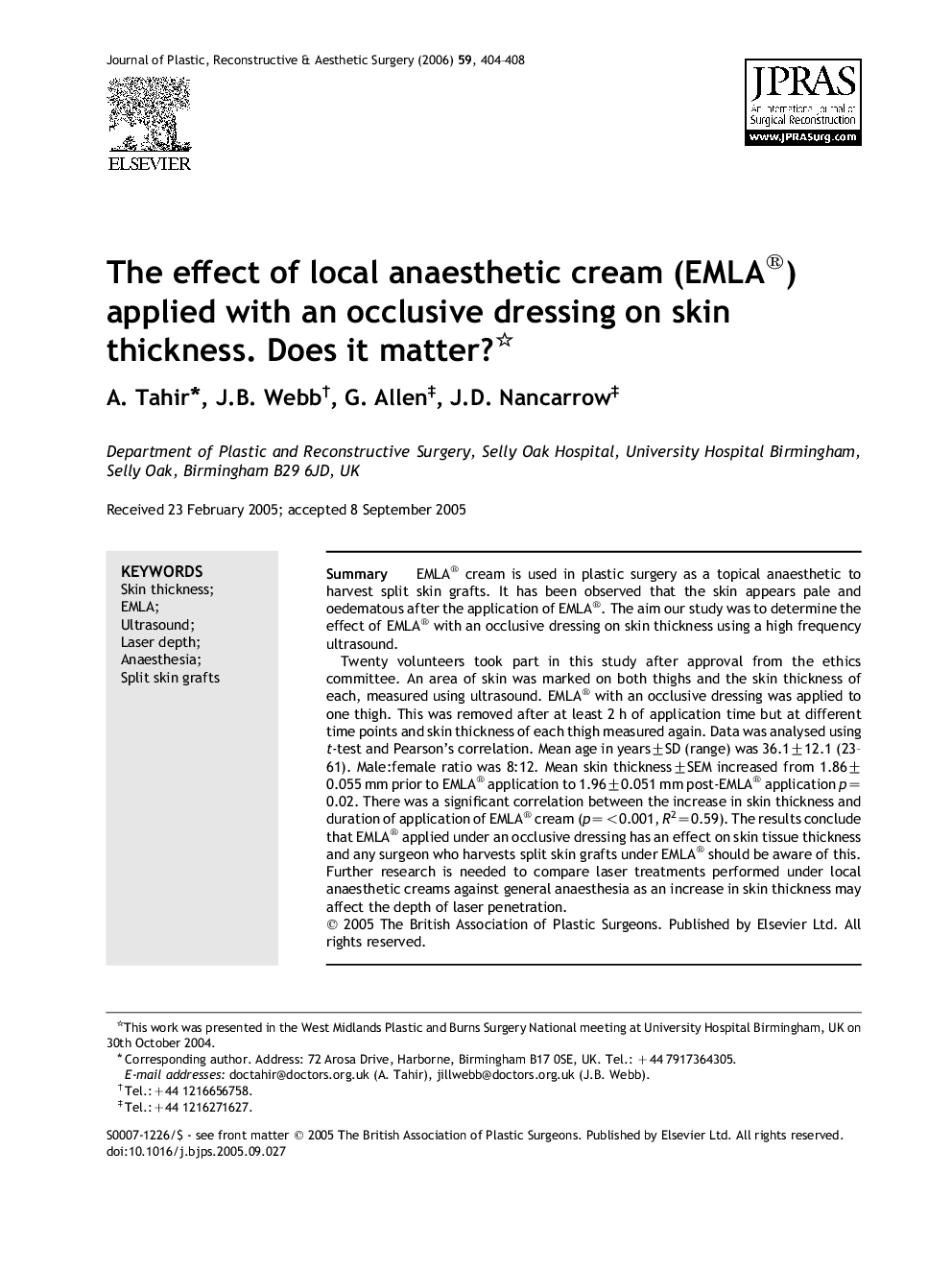| Article ID | Journal | Published Year | Pages | File Type |
|---|---|---|---|---|
| 4122379 | Journal of Plastic, Reconstructive & Aesthetic Surgery | 2006 | 5 Pages |
Abstract
Twenty volunteers took part in this study after approval from the ethics committee. An area of skin was marked on both thighs and the skin thickness of each, measured using ultrasound. EMLA® with an occlusive dressing was applied to one thigh. This was removed after at least 2 h of application time but at different time points and skin thickness of each thigh measured again. Data was analysed using t-test and Pearson's correlation. Mean age in years±SD (range) was 36.1±12.1 (23-61). Male:female ratio was 8:12. Mean skin thickness±SEM increased from 1.86±0.055 mm prior to EMLA® application to 1.96±0.051 mm post-EMLA® application p=0.02. There was a significant correlation between the increase in skin thickness and duration of application of EMLA® cream (p=<0.001, R2=0.59). The results conclude that EMLA® applied under an occlusive dressing has an effect on skin tissue thickness and any surgeon who harvests split skin grafts under EMLA® should be aware of this. Further research is needed to compare laser treatments performed under local anaesthetic creams against general anaesthesia as an increase in skin thickness may affect the depth of laser penetration.
Related Topics
Health Sciences
Medicine and Dentistry
Otorhinolaryngology and Facial Plastic Surgery
Authors
A. Tahir, J.B. Webb, G. Allen, J.D. Nancarrow,
